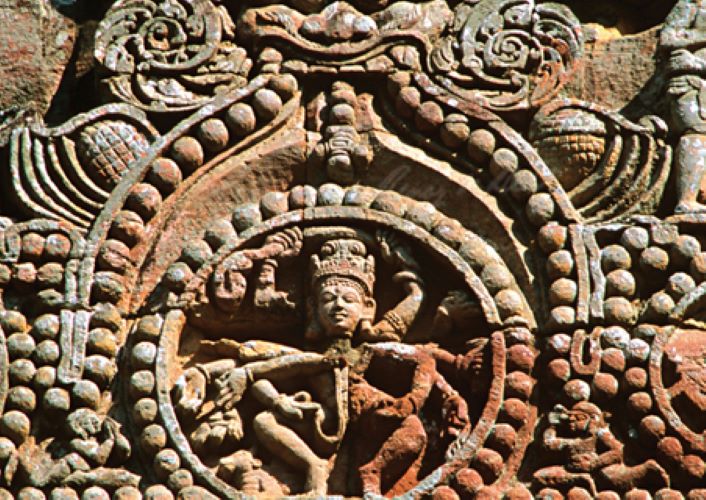CELEBRATION OF THE DIVINE

Benoy K Behl
After over a thousand years of rock-cut shrines in India, structural stone temples, in grand and developed styles, were made by the 8th century. The southern form was seen in Tamil Nadu under the Pallavas. Under the early Western Chalukyas, both southern and northern forms were seen at Pattadakal and Alampur.
In the meantime, further north-east, the land of present-day Odisha, witnessed prolific temple building by the 7th and 8th centuries.
The oldest surviving structural temples in Bhubaneshvar are of the 7th century, of the Shatrughaneshwara group. The temples are dedicated to Shiva and are of the Pashupata sect, who followed the teachings of Lakulisha.
The Mukteshvara temple in Bhubaneshvar, of the 10th century marks many developments over the structures of the past. It is small, with a deul or tower less than 35 feet high. However, it is acclaimed as a gem of Odisha architecture and is richly carved.
The torana entrance is first seen here in this region and has exquisite carvings upon it. On the upper part of the deul appears an elaborately decorated ornament of Odishan architecture- the bho. It consists of a chaitya arch with a kirtimukha above.
The Rajarani temple was built around 1000 CE. The jagmohan has a pidha roof in many layers, in the established Odisha style. However, the deul or tower has many clusters of the tower shape built around it. This gives it the appearance of a mountain. It is similar to the temples which were developing in Central India at this time.
The Brahmeshvara temple of the 11th century is made in the typical Odisha style. It is dedicated to Shiva and is made in the Panchayatana form, with four smaller shrines around the main one. The sculpture is finely made and the richly covers the surface of the temple.
The Lingaraja temple of the 12th century marks a high point in the tradition of temple building in Odisha. The temple is dedicated to Shiva and continues to be in worship till today. The deul rises to about 150 feet. The balance and proportions of the various parts of the temple and the elegance of its surface treatment make it one of the crowning achievements of the Odishan architect.
At Khiching, in what is today a very remote north-east part of Odisha, stands the reconstructed Khichakeshvari temple. It is originally of the 7th or 8th century and was restored in the early 20th century by the local raja.
With the emergence of structural temples in the plains of the Ganga, from the 5th century onwards, we see similar themes and motifs in North, Central and Eastern India. Yet, these are transformed by hands which bring the full richness of the local idiom. Here in the 10th and 11th centuries in Odisha, we see subjects of the art which are very similar to those of this period in Central India at Khajuraho. However, the sculpture is unmistakebly of Odisha.
In the meantime, the Western Ganga dynasty ruled in the region of present-day Karnataka. They were most prominent in the 10th century and are known for their monuments at the Jaina holy site of Shravanabelagola.
Chandragupta was the great Maurya king of the 4th century BCE and the grandfather of Emperor Ashoka. In his later years he is believed to have renounced his worldly life and become a Jaina ascetic. It is here at Shravanabelagola that he is believed to have come to give up the bindings of his mortal body.
In 983, Chamunda Raya, minister of King Rajmalla the Fourth, dedicated a colossal statue of Bahubali, also known as Gomasteshvara. This is about 60 feet high and is the largest free-standing monolithic sculpture of the world.
In the Indian tradition, deities of all faiths are adored. They are treated with reverence and fondness. They are given ritual baths and offered fresh flowers and fruit. The tradition finds its most exuberant expression in the grand Maha-Mastak-Abhishekha of the colossal Gomateshvara statue.
From extreme asceticism to the grand celebration of divinity, the aim is always to lose mundane attachments and desires: to lose oneself in a quest for the realization of the divinity which pervades all of creation.
Under its series Glimpses Of Culture, India Habitat Centre is presenting a talk by Art Historian,
Film-maker & Photographer (and the author of this article) Benoy K Behl tomorrow (August 24) at 6pm.
A film ‘Celebration of the Divine’ (produced by Behl for Doordarshan)
will also be screened on the occasion.
Click here to join

